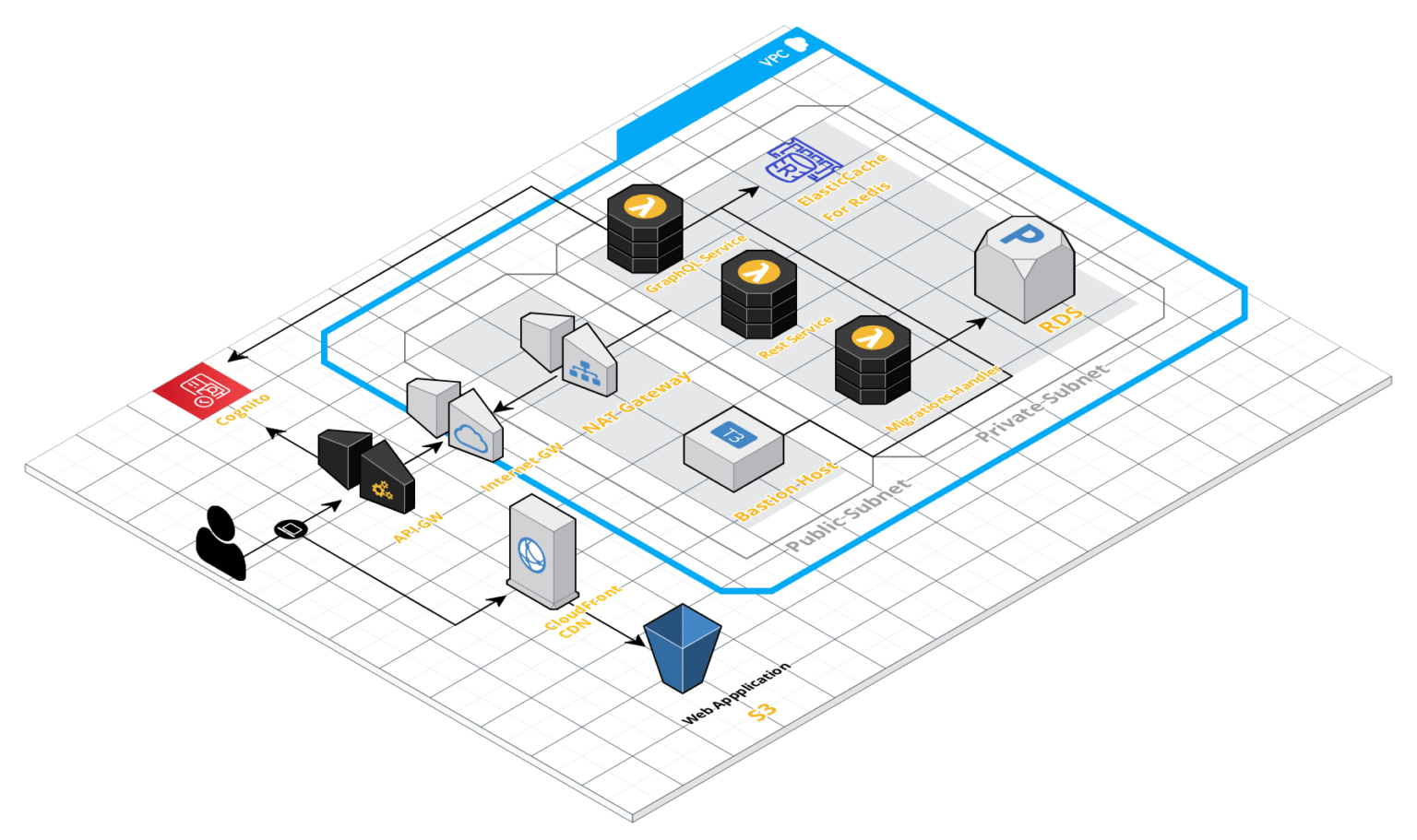In the realm of cloud computing, cost efficiency is a paramount concern for businesses looking to optimize their infrastructure expenses. Serverless computing offers a compelling economic advantage by shifting the focus from traditional resource management to a more dynamic, pay-as-you-go model. This shift not only helps businesses reduce their operational costs but also provides them with greater financial predictability and flexibility. Understanding how serverless infrastructure optimizes costs can help organizations make informed decisions and achieve significant savings.
Traditional Cost Models
In traditional infrastructure models, businesses typically pay for computing resources based on fixed allocations, such as server instances or virtual machines (VMs). These resources are often provisioned based on anticipated peak demand, leading to a common issue: over-provisioning or under-provisioning.
- Over-Provisioning: To handle peak loads, businesses often provision excess capacity. This approach ensures that there is enough power to manage high traffic periods but results in wasted resources and increased costs during off-peak times.
- Under-Provisioning: Conversely, if resources are provisioned based on average demand, businesses risk performance issues during peak times, potentially impacting user experience and operational efficiency.
These traditional models involve significant fixed costs and require ongoing management to balance capacity and demand, often leading to inefficiencies and higher costs.
How Serverless Optimizes Costs
Serverless infrastructure revolutionizes the cost model by aligning resource consumption directly with usage. Here’s how serverless computing optimizes costs:
1. Pay-as-You-Go Pricing
Serverless platforms operate on a pay-as-you-go model, which means that businesses are billed based on the actual compute time and resources used by their applications. This model contrasts sharply with traditional infrastructure, where costs are incurred based on provisioned capacity, regardless of utilization.
- Usage-Based Billing: In a serverless environment, you only pay for the execution time of functions and the resources they consume. For instance, AWS Lambda charges based on the number of requests and the duration of function execution, measured in milliseconds. If a function runs for 200 milliseconds, you are only charged for those 200 milliseconds of compute time.
- Resource Efficiency: Because you are billed only for the resources consumed, serverless eliminates the cost of idle capacity. During periods of low demand, functions scale down to zero, and you incur no charges, leading to significant cost savings.
For example, an e-commerce website that experiences high traffic during a holiday sale but normal traffic otherwise would benefit from serverless infrastructure. The website’s backend functions will automatically scale up to handle the increased load during the sale and scale down when traffic returns to normal, ensuring that costs are only incurred when necessary.
2. No Upfront Costs and Reduced Capital Expenditure
With serverless computing, businesses avoid the need for large upfront capital expenditures on hardware and infrastructure. Traditional models often require substantial investments in servers, storage, and networking equipment before an application can even go live.
- Zero Infrastructure Investment: Serverless infrastructure is managed by the cloud provider, which means businesses do not need to invest in physical servers or worry about hardware maintenance. This shift converts capital expenditure into operational expenditure, allowing businesses to allocate their budgets more flexibly.
- Scalable Spending: The ability to scale resources automatically based on demand also means that businesses can avoid the risk of investing in unused capacity. Costs are directly tied to actual usage, which helps in budgeting and financial planning.
For instance, a startup building a new application can launch and scale its product without having to purchase or maintain any servers. This reduces financial risk and enables the startup to use its capital for other growth-oriented activities.
3. Granular Billing
Serverless platforms provide granular billing that allows businesses to pay for the precise amount of compute resources they use. This granularity is in stark contrast to traditional models, where billing is often based on predefined resource blocks or instance sizes.
- Precision in Billing: With serverless, businesses are billed based on fine-grained metrics such as execution duration, memory usage, and the number of requests. This precision ensures that costs are more closely aligned with actual resource consumption.
- Cost Transparency: Detailed billing metrics offer greater visibility into resource usage and associated costs, enabling businesses to optimize their serverless functions and make informed decisions about their infrastructure.
For example, a media streaming service might use serverless functions to process and transcode videos. The service can be billed based on the exact amount of processing time and resources required for each video, rather than paying for a fixed amount of server capacity.
4. Reduced Operational Costs
Serverless computing reduces the operational burden associated with managing and maintaining infrastructure. In traditional setups, businesses incur additional costs related to server management, monitoring, and maintenance.
- Maintenance-Free Operations: Serverless platforms handle server maintenance tasks such as patching, updates, and scaling, which reduces the need for dedicated IT staff to manage these aspects. This leads to lower operational costs and less complexity in managing infrastructure.
- Reduced Downtime and Failures: Serverless infrastructure is designed to be highly available and fault-tolerant. The cloud provider manages redundancy and failover, minimizing downtime and reducing the need for businesses to invest in costly disaster recovery solutions.
For instance, a financial services company can use serverless functions to process transactions and perform data analysis without worrying about server failures or maintenance. The cloud provider ensures high availability and reliability, reducing the need for extensive monitoring and support teams.
5. Efficient Scaling
Serverless architecture enables efficient scaling that directly impacts cost optimization. Traditional infrastructure requires businesses to provision resources in anticipation of peak demand, which can lead to inefficiencies.
- Automatic Scaling: Serverless platforms automatically scale resources up or down based on real-time demand. This elasticity ensures that businesses only use and pay for the resources they need at any given moment.
- Cost-Effective Handling of Spikes: During traffic spikes or bursts of activity, serverless functions scale to accommodate increased loads without requiring manual intervention or additional resource provisioning.
For example, a social media platform might experience sudden spikes in activity due to viral content. With serverless infrastructure, the platform can handle these spikes seamlessly and cost-effectively, as resources are automatically scaled to meet the increased demand.
Real-World Examples of Cost Optimization with Serverless
1. Startups and Small Businesses
Startups and small businesses often operate with limited budgets and need to optimize their spending. Serverless infrastructure allows them to build and scale applications without the burden of upfront investments and high ongoing costs. This flexibility enables them to allocate resources more efficiently and invest in growth opportunities.
2. Event-Driven Applications
Applications with variable or unpredictable usage patterns, such as event-driven applications, benefit greatly from serverless cost optimization. For example, a ticketing platform that experiences high traffic during event releases can use serverless to scale dynamically and pay only for the resources used during peak times.
3. APIs and Microservices
Serverless is ideal for APIs and microservices that require fine-grained scaling and cost efficiency. By breaking down applications into smaller, independent functions, businesses can optimize resource allocation and reduce costs associated with maintaining and scaling large monolithic systems.
Challenges of Cost Optimization with Serverless
While serverless computing offers significant cost benefits, there are some challenges to consider:
1. Cold Start Latency
Cold starts, or the initial delay when a serverless function is invoked after a period of inactivity, can impact performance. Although this does not directly affect cost, it can influence the perceived value of serverless computing and necessitate additional strategies to mitigate latency.
2. Complex Pricing Models
Serverless pricing models can sometimes be complex, with multiple variables such as execution time, memory usage, and request counts. Understanding and predicting costs requires careful monitoring and management to avoid unexpected charges.
3. Vendor Lock-In
Serverless platforms are often tied to specific cloud providers, leading to potential vendor lock-in. This can impact the flexibility and long-term cost management strategies of businesses, particularly if they need to migrate to a different provider in the future.
Conclusion
Serverless infrastructure offers substantial economic benefits by optimizing costs and providing a more flexible, pay-as-you-go model. By aligning resource consumption with actual usage, reducing upfront investments, and simplifying operational management, serverless computing enables businesses to achieve significant cost savings while maintaining high levels of scalability and efficiency.
As organizations continue to seek ways to optimize their infrastructure expenditures, serverless computing stands out as a powerful tool for achieving financial efficiency and supporting growth. Understanding and leveraging the cost benefits of serverless can help businesses make informed decisions and drive long-term success in an increasingly competitive digital landscape.
To stay up to date wuth the latest news and trends, visit
To stay up to date with the latest news and trends, To learn more about our vision and how we’re making a difference, check out OC-B by Oort X Media.




